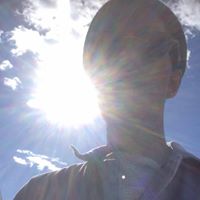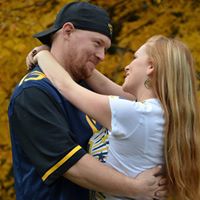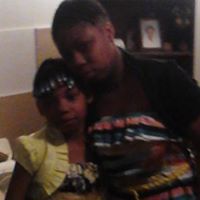Ronald Leigh Boyce
age ~59
from Leland, NC
- Also known as:
-
- Ronald Lei Boyce
- Ronald L Boyce
Ronald Boyce Phones & Addresses
- Leland, NC
- 1129 Naranca Ave, El Cajon, CA 92021
- Kill Devil Hills, NC
- Whitney Point, NY
- Berkshire, NY
- Norfolk, VA
- Virginia Beach, VA
- Imperial, MO
Isbn (Books And Publications)

Cases and Materials on Criminal Law and Procedure
view sourceAuthor
Ronald N. Boyce
ISBN #
0882771868




The Bases of Economic Geography: An Essay on the Spatial Characteristics of Man's Economic Activities
view sourceAuthor
Ronald R Boyce
ISBN #
0030811031

Us Patents
-
Chemical Etching Of A Striking Plate For A Golf Club Head
view source -
US Patent:6381828, May 7, 2002
-
Filed:Apr 13, 2000
-
Appl. No.:09/548314
-
Inventors:Ronald C. Boyce - San Diego CA
Richard C. Helmstetter - Carlsbad CA
Alan Hocknell - Cardiff CA
J. Andrew Galloway - Escondido CA -
Assignee:Callaway Golf Company - Carlsbad CA
-
International Classification:A63B 5304
-
US Classification:295274, 473342, 473345, 473409, 473349, 295272, 29557, 148669
-
Abstract:A method for chemically etching a forged striking plate for a golf club to uniformly remove 0. 002 inch to 0. 015 inch of material therefrom. The forged striking plate is placed in an acidic bath to uniformly remove material from all surfaces of the striking plate. The forging process, conducted prior to etching, involves multiple heating and pressing of a metal bar to obtain a final face member configuration. The heating of the metal bar is performed at temperatures below 1000Â C. for less than twenty minutes. The final face member configuration has a striking plate with regions of variable thickness. The metal bar is preferably composed of a forged titanium material.
-
High Cofficient Of Restitution Golf Club Head
view source -
US Patent:6390933, May 21, 2002
-
Filed:Nov 2, 2000
-
Appl. No.:09/705253
-
Inventors:J. Andrew Galloway - Escondido CA
Richard C. Helmstetter - Rancho Santa Fe CA
Alan Hocknell - Encinitas CA
Ronald C. Boyce - San Diego CA
Homer E. Aguinaldo - San Diego CA -
Assignee:Callaway Golf Company - Carlsbad CA
-
International Classification:A63B 5302
-
US Classification:473345, 473342, 473305, 473290
-
Abstract:A golf club having a club head having with a coefficient of restitution greater than 0. 845 and a durability to withstand 2000 impacts with a golf ball at 110 mile per hour is disclosed herein. The club head may be composed of three pieces, a face, a sole and a crown. Each of the pieces may be composed of a titanium material. The club head may be composed of a titanium material, have a volume in the range of 175 cubic centimeters to 400 cubic centimeters, a weight in the range of 165 grams to 300 grams, and a striking plate surface area in the range of 4. 00 square inches to 7. 50 square inches.
-
Golf Club Head With A Face Composed Of A Forged Material
view source -
US Patent:6435982, Aug 20, 2002
-
Filed:Nov 20, 2001
-
Appl. No.:09/683118
-
Inventors:J. Andrew Galloway - Escondido CA
Richard C. Helmstetter - Carlsbad CA
Alan Hocknell - Cardiff CA
Ronald C. Boyce - San Diego CA
Homer E. Aguinaldo - San Diego CA
Curtis S. Woolley - Carlsbad CA -
Assignee:Callaway Golf Company - Carlsbad CA
-
International Classification:A63B 5304
-
US Classification:473342, 473345, 473349
-
Abstract:A golf club having a club head with a striking plate having a thickness in the range of 0. 010 to 0. 250 inch is disclosed herein. The club head may be composed of three pieces, a face, a sole and a crown. Each of the pieces may be composed of a titanium material. The striking plate of the club head may have an aspect ratio less than 1. 7. The striking plate may also have concentric regions of thickness with the thickness portion in the center. The club head may be composed of a titanium material, have a volume in the range of 175 cubic centimeters to 400 cubic centimeters, a weight in the range of 165 grams to 300 grams, and a striking plate surface area in the range of 4. 00 square inches to 7. 50 square inches. The golf club head may also have a coefficient of restitution greater than 0.
-
Method For Processing A Striking Plate For A Golf Club Head
view source -
US Patent:6440011, Aug 27, 2002
-
Filed:Apr 13, 2000
-
Appl. No.:09/548531
-
Inventors:Alan Hocknell - Cardiff CA
J. Andrew Galloway - Escondido CA
Richard C. Helmstetter - Carlsbad CA
Ronald C. Boyce - San Diego CA -
Assignee:Callaway Golf Company - Carlsbad CA
-
International Classification:A63B 5304
-
US Classification:473342, 473345, 473409, 473349, 295272, 295274, 148669
-
Abstract:A method for producing a forged striking plate for a golf club is disclosed herein. The forging process involves multiple heating and pressing of a metal bar to obtain a final face member configuration. The heating of the metal bar is performed at temperatures below 1000Â C. for less than twenty minutes. The final face member configuration has a striking plate with regions of variable thickness. The metal bar is preferably composed of a forged titanium material.
-
Set Of Woods With Face Thickness Variation Based On Loft Angle
view source -
US Patent:6506127, Jan 14, 2003
-
Filed:Dec 21, 2001
-
Appl. No.:09/683401
-
Inventors:Richard C. Helmstetter - Rancho Santa Fe CA
J. Andrew Galloway - Escondido CA
Ronald C. Boyce - Cardiff CA
Homer E. Aguinaldo - San Diego CA
Alan Hocknell - Encinitas CA -
Assignee:Callaway Golf Company - Carlsbad CA
-
International Classification:A63B 5304
-
US Classification:473290, 473291
-
Abstract:The present invention is directed at varying the thickness of a striking plate of a golf club head according to the loft angle of the golf club head. The thickness of the striking plate is greater for lower loft angles, such as seven, eight and nine degrees loft angle drivers, as compared to ten, eleven and twelve degrees loft angle drivers. The striking plate may have a variable face thickness with the thickest region near the center.
-
Golf Club Head
view source -
US Patent:6582321, Jun 24, 2003
-
Filed:Feb 28, 2002
-
Appl. No.:09/683906
-
Inventors:J. Andrew Galloway - Escondido CA
Richard C. Helmstetter - Rancho Santa Fe CA
Alan Hocknell - Encinitas CA
Ronald C. Boyce - Cardiff CA
Homer E. Aguinaldo - San Diego CA
Curtis S. Woolley - Carlsbad CA -
Assignee:Callaway Golf Company - Carlsbad CA
-
International Classification:A63B 5304
-
US Classification:473329, 473342, 473349, 473345
-
Abstract:A golf club having a club head with a striking plate having a thickness in the range of 0. 010 to 0. 250 inch is disclosed herein. The club head may be composed of three pieces, a face, a sole and a crown. Each of the pieces may be composed of a titanium material. The striking plate of the club head may have an aspect ratio less than 1. 7. The striking plate may also have concentric regions of thickness with the thickness portion in the center. The club head may be composed of a titanium material, have a volume in the range of 175 cubic centimeters to 400 cubic centimeters, a weight in the range of 165 grams to 300 grams, and a striking plate surface area in the range of 4. 00 square inches to 7. 50 square inches. The golf club head may also have a coefficient of restitution greater than 0.
-
Golf Club Head
view source -
US Patent:6620056, Sep 16, 2003
-
Filed:Mar 12, 2003
-
Appl. No.:10/249054
-
Inventors:J. Andrew Galloway - Escondido CA
Richard C. Helmstetter - Rancho Santo Fe CA
Ronald C. Boyce - Cardiff CA
Homer E. Aguinaldo - San Diego CA
Curtis S. Woolley - Carlsbad CA
Alan Hocknell - Encinitas CA -
Assignee:Callaway Golf Company - Carlsbad CA
-
International Classification:A63B 5304
-
US Classification:473342, 473329, 473345, 473349
-
Abstract:A golf club having a club head with a striking plate having a thickness in the range of 0. 010 to 0. 250 inch is disclosed herein. The club head may be composed of three pieces, a face, a sole and a crown. Each of the pieces may be composed of a titanium material. The striking plate of the club head may have an aspect ratio less than 1. 7. The striking plate may also have concentric regions of thickness with the thickness portion in the center. The club head may be composed of a titanium material, have a volume in the range of 175 cubic centimeters to 400 cubic centimeters, a weight in the range of 165 grams to 300 grams, and a striking plate surface area in the range of 4. 00 square inches to 7. 50 square inches. The golf club head may also have a coefficient of restitution greater than 0.
-
Golf Club Head
view source -
US Patent:6800040, Oct 5, 2004
-
Filed:Sep 3, 2003
-
Appl. No.:10/655142
-
Inventors:J. Andrew Galloway - Escondido CA
Richard C. Helmstetter - Carlsbad CA
Alan Hocknell - Cardiff CA
Ronald C. Boyce - San Diego CA
Homer E. Aguinaldo - San Diego CA
Curtis S. Woolley - Carlsbad CA -
Assignee:Callaway Golf Company - Carlsbad CA
-
International Classification:A63B 5304
-
US Classification:473342, 473329, 473345
-
Abstract:A golf club having a club head with a striking plate having a thickness in the range of 0. 010 to 0. 250 inch is disclosed herein. The club head may be composed of three pieces, a face member, a sole and a crown. The striking plate of the club head may have an aspect ratio less than 1. 7. The striking plate may also have concentric regions of varying thickness, with the thickness portion in the center. The club head may be composed of a titanium material, have a volume in the range of 175 cubic centimeters to 400 cubic centimeters, a weight in the range of 165 grams to 300 grams, and a striking plate surface area in the range of 4. 00 square inches to 7. 50 square inches. The golf club head may also have a coefficient of restitution greater than 0. 8 under test conditions, such as the USGA test conditions specified pursuant to Rule 4-1e, Appendix II, of the Rules of Golf for 1998-1999.
Resumes

Ronald Boyce
view source
Ronald Boyce
view source
Ronald Boyce
view source
Ronald Boyce
view source
Ronald Boyce
view source
Ronald Boyce
view source
Ronald Boyce
view source
Ronald Boyce
view sourceLocation:
United States
Youtube
Flickr
Googleplus

Ronald Boyce

Ronald Boyce
Myspace

Ronald Boyce
view source
Ronald Boyce
view source
Ronald Boyce
view source
Ronald Boyce
view source
Ronald Boyce
view source
Ronald Boyce
view source
Ronald Boyce
view source
Ronald Boyce
view sourceClassmates

Ronald Boyce
view sourceSchools:
Truro High School Truro Swaziland 1966-1970
Community:
Barb Sullivan, Evelyn Ryan, Donald Lynds

Ronald Boyce
view sourceSchools:
Columbus Elementary School Poughkeepsie NY 1948-1949
Community:
Mary Nye, Tina Odom

Ronald Boyce
view sourceSchools:
West Lafayette High School West Lafayette IN 1964-1968
Community:
Nancy Bowman

Ronald Boyce
view sourceSchools:
Rosedale High School Kansas City KS 1953-1960, Argentine High School Kansas City KS 1954-1958
Community:
Terry Liston, John Bryan, Jane Olsted, John Ure, David King, Leonard Risker, Sharron Cole, Richard Shaner, Linda Pike, Dick Clark, Gayle Wisner

Ronald Boyce
view sourceSchools:
Perquimans County High School Hertford NC 1981-1985
Community:
Timothy White, Elsie Lowe, Johnnie Hollowell, Mike Ivey, David Johnson, Mary Whidbee, Rhonda Hayes, Shirley White, Teresa White, Kevin Knowles

Truro High School, Truro,...
view sourceGraduates:
Dawn Thompson (1973-1977),
Chaffee Cline (1976-1977),
Charlie Wilkinson (1964-1968),
Ronald Boyce (1966-1970),
Robert Atkinson (1965-1969)
Chaffee Cline (1976-1977),
Charlie Wilkinson (1964-1968),
Ronald Boyce (1966-1970),
Robert Atkinson (1965-1969)

Columbus Elementary Schoo...
view sourceGraduates:
Ronald Boyce (1948-1949),
Norman Scull (1942-1946),
Angela Mathis (1967-1969),
Robert Barrenger (1945-1954),
Roseann Szorad (1979-1980)
Norman Scull (1942-1946),
Angela Mathis (1967-1969),
Robert Barrenger (1945-1954),
Roseann Szorad (1979-1980)

West Lafayette High Schoo...
view sourceGraduates:
Ron Sanchez (1978-1982),
Aniseh Shapiro (1988-1992),
Richard Braun (1958-1962),
Ronald Boyce (1964-1968)
Aniseh Shapiro (1988-1992),
Richard Braun (1958-1962),
Ronald Boyce (1964-1968)
Get Report for Ronald Leigh Boyce from Leland, NC, age ~59














